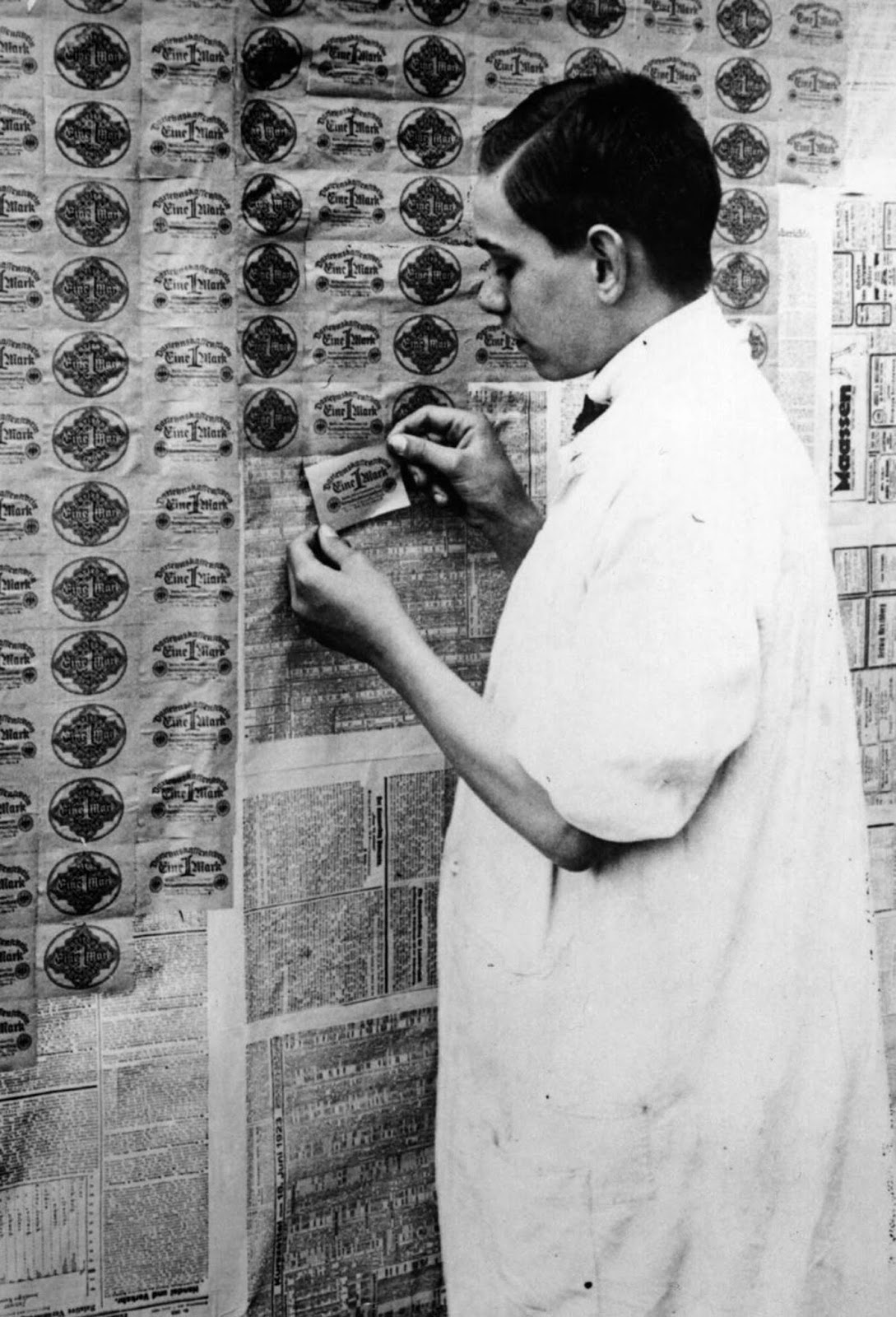In 1923, at the most fevered moment of the German hyperinflation, the exchange rate between the dollar and the Mark was one trillion Marks to one dollar, and a wheelbarrow full of money would not even buy a newspaper. Most Germans were taken by surprise by the financial tornado. The currency had lost meaning. The hyperinflation in the Weimar Republic was a three-year period of hyperinflation in Germany (the Weimar Republic) between June 1921 and January 1924. Beginning in August 1921, Germany began to buy foreign currency with marks at any price, but that only increased the speed of breakdown in the value of the Mark. The lower the mark sank in international markets, the greater the amount of marks were required to buy the foreign currency demanded by the Reparations Commission. During the first half of 1922, the Mark stabilized at about 320 Marks per Dollar. This was accompanied by international reparations conferences, including one in June 1922 organized by U.S. investment banker J. P. Morgan, Jr. When these meetings produced no workable solution, the inflation changed to hyperinflation and the Mark fell to 800 Marks per Dollar by December 1922. The cost-of-living index was 41 in June 1922 and 685 in December, an increase of more than 15 times. Zero stroke or cipher stroke was an alleged mental disorder, reportedly diagnosed by physicians in Germany during the hyperinflation in the Weimar Republic (1921-24). The disorder was primarily characterized by the desire of patients to write endless rows of zeros, which are also referred to as ciphers. The zero stroke disorder was supposedly caused by the dizzying speed of hyperinflation and the calculations required to conduct commerce under its effect. It has been said that during the worst period of hyperinflation that in the time it took to drink a cup of coffee, the price for the cup could double. (Photo credit: Bundesarchiv). Notify me of new posts by email.
Δ Subscribe












